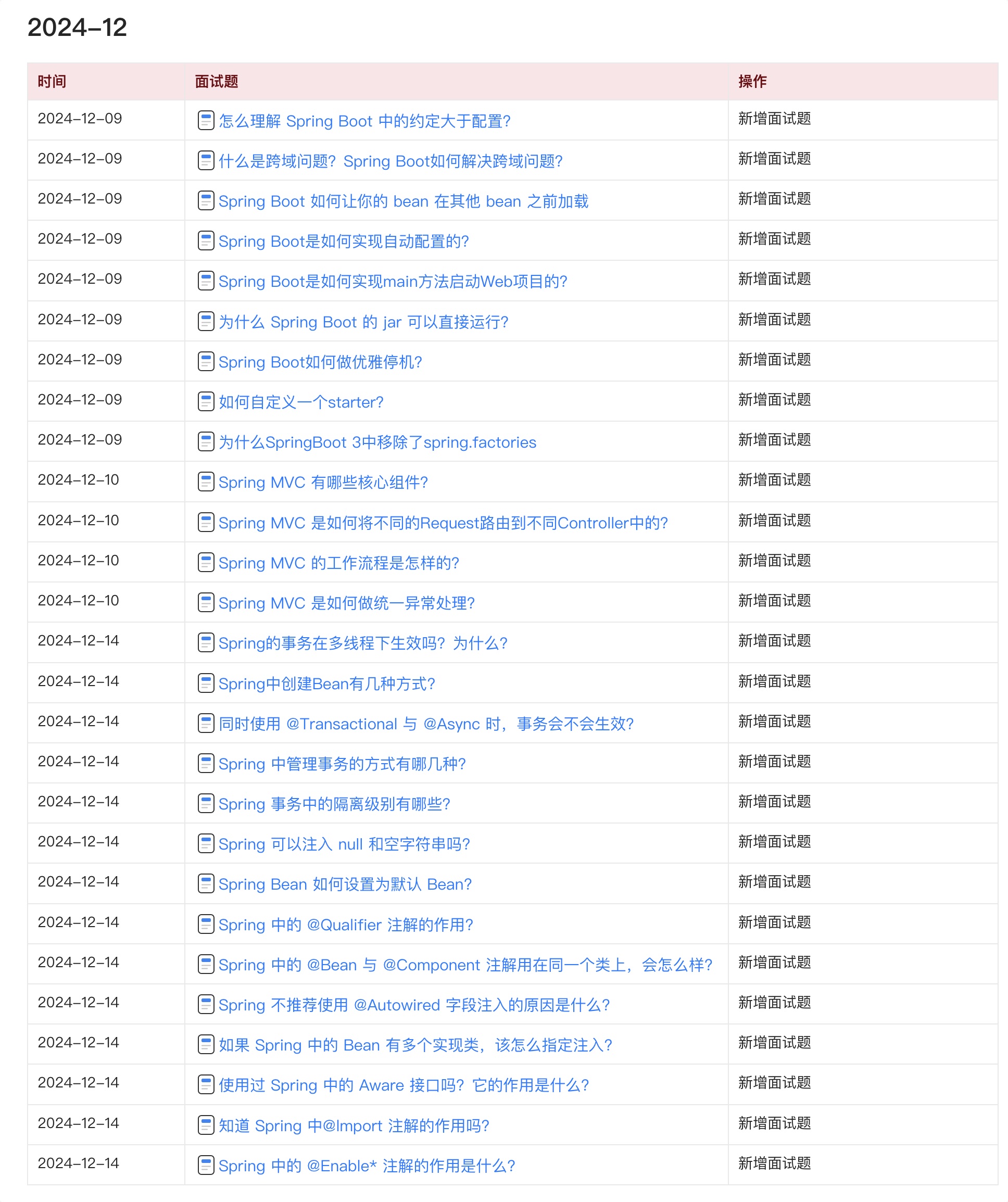图不能少

obtainFromSupplier实例提供器
可以进行自己的提供器提供实例直接返回。


实战
要把我们这个干净的类注册到容器里:
public class MySupplier implements Supplier {
@Override
public Object get() {
MyBeforeInstantiation instantiation=new MyBeforeInstantiation();
instantiation.age=100;
return instantiation;
}
}
MySupplier实例提供器
public class MySupplier implements Supplier {
@Override
public Object get() {
return new MyBeforeInstantiation();
}
}
测试代码
测试代码:
@Test
public void MySupplierTest() throws Exception {
AnnotationConfigApplicationContext applicationContext = new AnnotationConfigApplicationContext();
applicationContext.register(MyConfig.class);
applicationContext.registerBean("myBeforeInstantiation",MyBeforeInstantiation.class,new MySupplier());
applicationContext.refresh();
MyBeforeInstantiation myBeforeInstantiation = applicationContext.getBean(MyBeforeInstantiation.class);
System.out.println(myBeforeInstantiation.age);
}

SmartInstantiationAwareBeanPostProcessor的determineCandidateConstructors
createBeanInstance中的determineConstructorsFromBeanPostProcessors获取构造方法。这里主要是AutowiredAnnotationBeanPostProcessor可能会帮你挑选出Autowired注解的方法。但是我们自己扩展个试试。

只要有返回的构造器不为空,就直接返回了。

实战
里面有两个构造方法的时候,AutowiredAnnotationBeanPostProcessor会选择默认构造方法,所以输出应该是0。但是这次我要想让他使用第二个构造方法。
MyBeforeInstantiation
MyBeforeInstantiation我们要实例化的类:
@Component
public class MyBeforeInstantiation {
public int age;
public MyBeforeInstantiation(){
System.out.println("MyBeforeInstantiation()");
}
public MyBeforeInstantiation(PoJo poJo1,PoJo poJo2) {
System.out.println("BeforeInstantiation(PoJo poJo1,PoJo poJo2)");
}
}
//测试用的
@Component
public class PoJo {
}
测试代码
@Test
public void determineCandidateConstructorsTest() throws Exception {
AnnotationConfigApplicationContext applicationContext = new AnnotationConfigApplicationContext();
applicationContext.register(MyConfig.class);
applicationContext.refresh();
}
结果输出:

MySmartInstantiationAwareBeanPostProcessor扩展处理器
我就指定让他返回第二个构造方法。
@Component
public class MySmartInstantiationAwareBeanPostProcessor implements SmartInstantiationAwareBeanPostProcessor {
@Override
public Constructor<?>[] determineCandidateConstructors(Class<?> beanClass, String beanName) throws BeansException {
if(beanClass.getSimpleName().equals(MyBeforeInstantiation.class.getSimpleName())){
try {
return new Constructor[]{beanClass.getDeclaredConstructor(PoJo.class,PoJo.class)};
} catch (NoSuchMethodException e) {
e.printStackTrace();
}
}
return null;
}
}
结果:

我们成功改变了原有的设置。
疑问
但是有个问题,有没想过,为什么我们的处理器是在内部处理器AutowiredAnnotationBeanPostProcessor之前处理的,我们没有声明任何优先排序啊,其实这个是在注册处理器registerBeanPostProcessors的中将MergedBeanDefinitionPostProcessor类型的放入internalPostProcessors中了,而AutowiredAnnotationBeanPostProcessor和CommonAnnotationBeanPostProcessor刚好是这个类型的,他们最后又被注册了一遍,而注册的方法是会把存在的删除,然后把新注册的放最后。


这就解释了为什么我们的在他们前面了,本来是他们先注册进去的,只最后被重新注册到后面了,所以可以先执行我们的处理器,返回的构造器不为null就直接返回对象了。
当然如果你为了要保证顺序的话就实现PriorityOrdered接口吧,比如还有其他的一些处理器,得有个顺序对吧:
@Component
public class MySmartInstantiationAwareBeanPostProcessor implements SmartInstantiationAwareBeanPostProcessor, PriorityOrdered {
@Override
public Constructor<?>[] determineCandidateConstructors(Class<?> beanClass, String beanName) throws BeansException {
if(beanClass.getSimpleName().equals(MyBeforeInstantiation.class.getSimpleName())){
try {
return new Constructor[]{beanClass.getDeclaredConstructor(PoJo.class,PoJo.class)};
} catch (NoSuchMethodException e) {
e.printStackTrace();
}
}
return null;
}
@Override
public int getOrder() {
return 0;
}
}
好了,今天就到这里了,希望对学习理解有帮助,大神看见勿喷,仅为自己的学习理解,能力有限,请多包涵。
Java 面试宝典是大明哥全力打造的 Java 精品面试题,它是一份靠谱、强大、详细、经典的 Java 后端面试宝典。它不仅仅只是一道道面试题,而是一套完整的 Java 知识体系,一套你 Java 知识点的扫盲贴。
它的内容包括:
- 大厂真题:Java 面试宝典里面的题目都是最近几年的高频的大厂面试真题。
- 原创内容:Java 面试宝典内容全部都是大明哥原创,内容全面且通俗易懂,回答部分可以直接作为面试回答内容。
- 持续更新:一次购买,永久有效。大明哥会持续更新 3+ 年,累计更新 1000+,宝典会不断迭代更新,保证最新、最全面。
- 覆盖全面:本宝典累计更新 1000+,从 Java 入门到 Java 架构的高频面试题,实现 360° 全覆盖。
- 不止面试:内容包含面试题解析、内容详解、知识扩展,它不仅仅只是一份面试题,更是一套完整的 Java 知识体系。
- 宝典详情:https://www.yuque.com/chenssy/sike-java/xvlo920axlp7sf4k
- 宝典总览:https://www.yuque.com/chenssy/sike-java/yogsehzntzgp4ly1
- 宝典进展:https://www.yuque.com/chenssy/sike-java/en9ned7loo47z5aw
目前 Java 面试宝典累计更新 400+ 道,总字数 42w+。大明哥还在持续更新中,下图是大明哥在 2024-12 月份的更新情况:

想了解详情的小伙伴,扫描下面二维码加大明哥微信【daming091】咨询

同时,大明哥也整理一套目前市面最常见的热点面试题。微信搜[大明哥聊 Java]或扫描下方二维码关注大明哥的原创公众号[大明哥聊 Java] ,回复【面试题】 即可免费领取。

